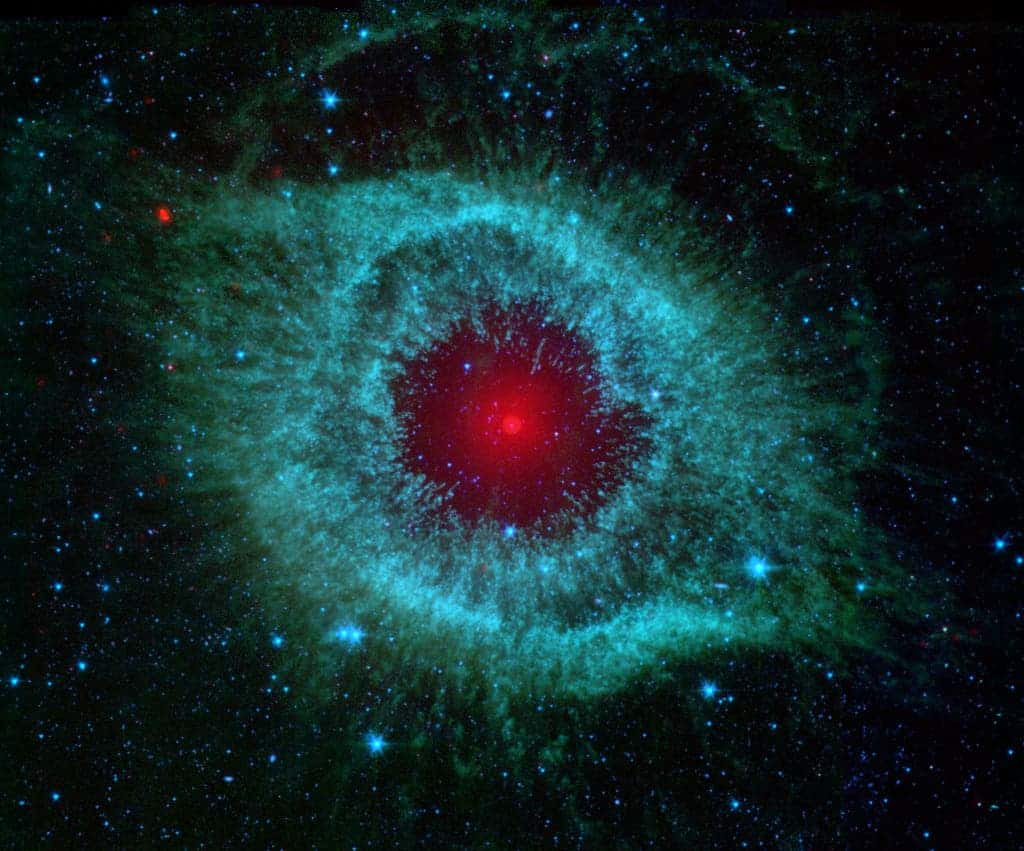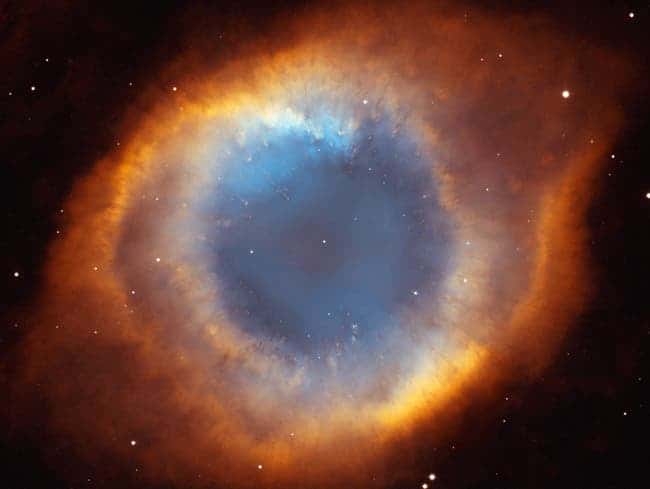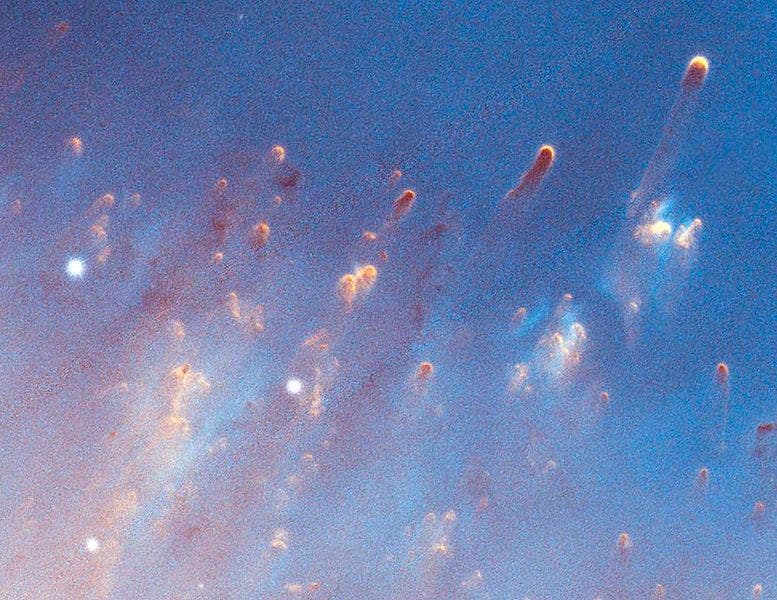
The Helix Nebula used to be a star much like our Sun, but it is now in a different stage – ejecting most of its material. It’s estimated that our Sun will also become a nebula in about 5 billion years. It lies 650 light-years away, in the constellation of Aquarius. Also known by the catalog number NGC 7293, it is a typical example of a class of objects called planetary nebulae, and it’s one of the closes nebulas to Earth.

When the hydrogen fuel for the fusion reaction runs out, the star turns to helium for a fuel source, burning it into an even heavier mix of carbon, nitrogen and oxygen. Eventually, the helium will also be exhausted and then you’re left with a small, yet still hot and very dense core called a white dwarf. White dwarfs are about as big as the Earth, but they still have most of their original mass. The mass is so dense that about 1/10th of a tea spoon weighs more than you.

But why are all these pictures of the nebula different? Well, this glow ranges across a very broad part of the spectrum, from ultraviolet to infrared. So depending on what wavelengths you observe it in, you get a different image. In recent years, Hubble Space Telescope images have revealed many planetary nebulae to have extremely complex and varied morphologies.

Nebulae are sometimes also called “galactic recyclers” – the early universe consisted almost entirely of hydrogen and helium, but stars create heavier elements via nuclear fusion. The gases of planetary nebulae thus contain a large proportion of elements such as carbon, nitrogen and oxygen, and they eject these elements into the cosmic space, enriching it and basically “planting the seeds” for new stars. Subsequent stars will have a higher ratio of heavier elements; this is actually how astronomers figure out how old a star is. The earliest stars have very few heavier elements, while newer ones have them in a great proportion.
Was this helpful?



